Chunxia Xiao
Mitigating Knowledge Discrepancies among Multiple Datasets for Task-agnostic Unified Face Alignment
Mar 28, 2025


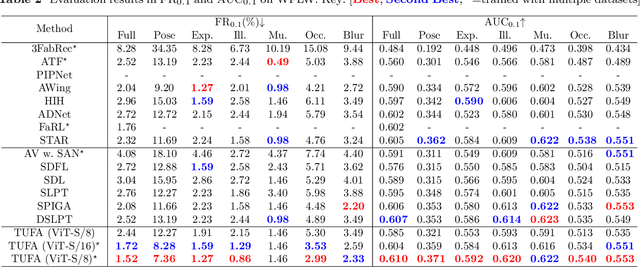
Abstract:Despite the similar structures of human faces, existing face alignment methods cannot learn unified knowledge from multiple datasets with different landmark annotations. The limited training samples in a single dataset commonly result in fragile robustness in this field. To mitigate knowledge discrepancies among different datasets and train a task-agnostic unified face alignment (TUFA) framework, this paper presents a strategy to unify knowledge from multiple datasets. Specifically, we calculate a mean face shape for each dataset. To explicitly align these mean shapes on an interpretable plane based on their semantics, each shape is then incorporated with a group of semantic alignment embeddings. The 2D coordinates of these aligned shapes can be viewed as the anchors of the plane. By encoding them into structure prompts and further regressing the corresponding facial landmarks using image features, a mapping from the plane to the target faces is finally established, which unifies the learning target of different datasets. Consequently, multiple datasets can be utilized to boost the generalization ability of the model. The successful mitigation of discrepancies also enhances the efficiency of knowledge transferring to a novel dataset, significantly boosts the performance of few-shot face alignment. Additionally, the interpretable plane endows TUFA with a task-agnostic characteristic, enabling it to locate landmarks unseen during training in a zero-shot manner. Extensive experiments are carried on seven benchmarks and the results demonstrate an impressive improvement in face alignment brought by knowledge discrepancies mitigation.
FriendsQA: A New Large-Scale Deep Video Understanding Dataset with Fine-grained Topic Categorization for Story Videos
Dec 22, 2024Abstract:Video question answering (VideoQA) aims to answer natural language questions according to the given videos. Although existing models perform well in the factoid VideoQA task, they still face challenges in deep video understanding (DVU) task, which focuses on story videos. Compared to factoid videos, the most significant feature of story videos is storylines, which are composed of complex interactions and long-range evolvement of core story topics including characters, actions and locations. Understanding these topics requires models to possess DVU capability. However, existing DVU datasets rarely organize questions according to these story topics, making them difficult to comprehensively assess VideoQA models' DVU capability of complex storylines. Additionally, the question quantity and video length of these dataset are limited by high labor costs of handcrafted dataset building method. In this paper, we devise a large language model based multi-agent collaboration framework, StoryMind, to automatically generate a new large-scale DVU dataset. The dataset, FriendsQA, derived from the renowned sitcom Friends with an average episode length of 1,358 seconds, contains 44.6K questions evenly distributed across 14 fine-grained topics. Finally, We conduct comprehensive experiments on 10 state-of-the-art VideoQA models using the FriendsQA dataset.
GGS: Generalizable Gaussian Splatting for Lane Switching in Autonomous Driving
Sep 04, 2024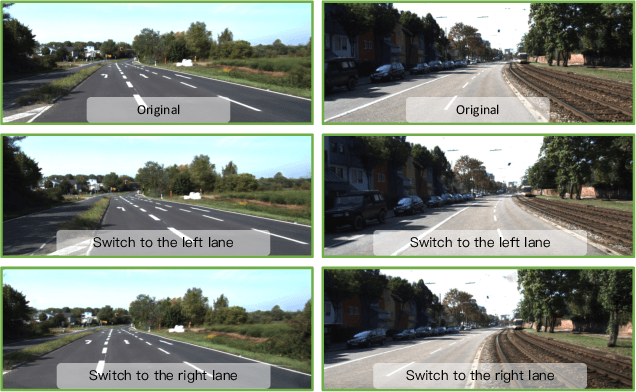
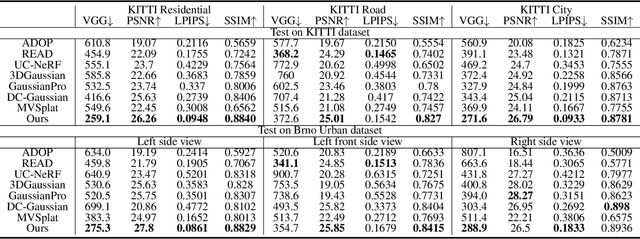
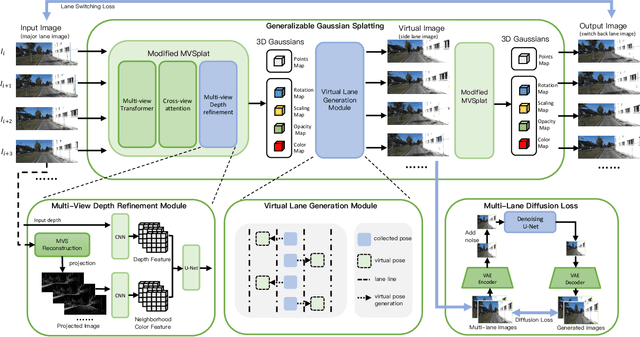

Abstract:We propose GGS, a Generalizable Gaussian Splatting method for Autonomous Driving which can achieve realistic rendering under large viewpoint changes. Previous generalizable 3D gaussian splatting methods are limited to rendering novel views that are very close to the original pair of images, which cannot handle large differences in viewpoint. Especially in autonomous driving scenarios, images are typically collected from a single lane. The limited training perspective makes rendering images of a different lane very challenging. To further improve the rendering capability of GGS under large viewpoint changes, we introduces a novel virtual lane generation module into GSS method to enables high-quality lane switching even without a multi-lane dataset. Besides, we design a diffusion loss to supervise the generation of virtual lane image to further address the problem of lack of data in the virtual lanes. Finally, we also propose a depth refinement module to optimize depth estimation in the GSS model. Extensive validation of our method, compared to existing approaches, demonstrates state-of-the-art performance.
DLCA-Recon: Dynamic Loose Clothing Avatar Reconstruction from Monocular Videos
Dec 20, 2023



Abstract:Reconstructing a dynamic human with loose clothing is an important but difficult task. To address this challenge, we propose a method named DLCA-Recon to create human avatars from monocular videos. The distance from loose clothing to the underlying body rapidly changes in every frame when the human freely moves and acts. Previous methods lack effective geometric initialization and constraints for guiding the optimization of deformation to explain this dramatic change, resulting in the discontinuous and incomplete reconstruction surface. To model the deformation more accurately, we propose to initialize an estimated 3D clothed human in the canonical space, as it is easier for deformation fields to learn from the clothed human than from SMPL. With both representations of explicit mesh and implicit SDF, we utilize the physical connection information between consecutive frames and propose a dynamic deformation field (DDF) to optimize deformation fields. DDF accounts for contributive forces on loose clothing to enhance the interpretability of deformations and effectively capture the free movement of loose clothing. Moreover, we propagate SMPL skinning weights to each individual and refine pose and skinning weights during the optimization to improve skinning transformation. Based on more reasonable initialization and DDF, we can simulate real-world physics more accurately. Extensive experiments on public and our own datasets validate that our method can produce superior results for humans with loose clothing compared to the SOTA methods.
Towards High-Quality Specular Highlight Removal by Leveraging Large-Scale Synthetic Data
Sep 12, 2023
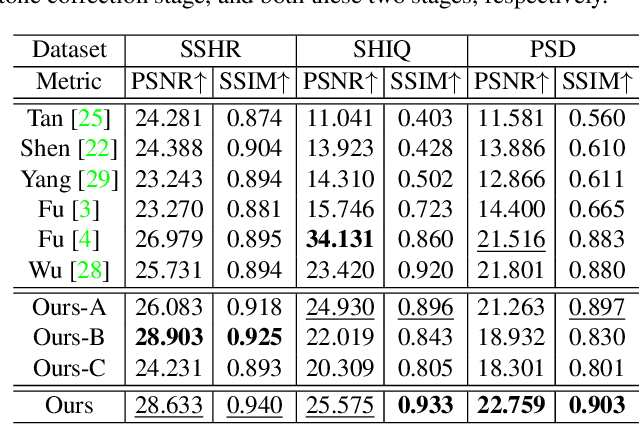
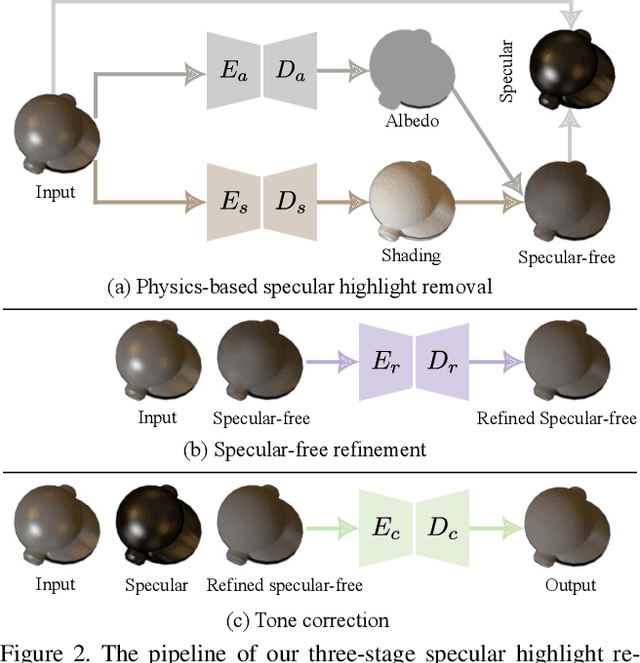
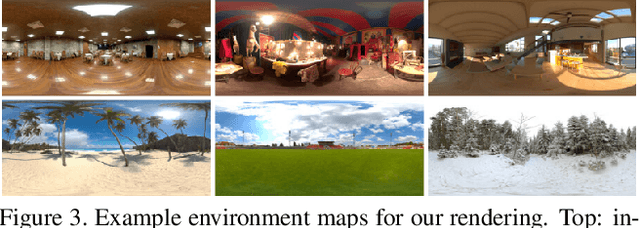
Abstract:This paper aims to remove specular highlights from a single object-level image. Although previous methods have made some progresses, their performance remains somewhat limited, particularly for real images with complex specular highlights. To this end, we propose a three-stage network to address them. Specifically, given an input image, we first decompose it into the albedo, shading, and specular residue components to estimate a coarse specular-free image. Then, we further refine the coarse result to alleviate its visual artifacts such as color distortion. Finally, we adjust the tone of the refined result to match that of the input as closely as possible. In addition, to facilitate network training and quantitative evaluation, we present a large-scale synthetic dataset of object-level images, covering diverse objects and illumination conditions. Extensive experiments illustrate that our network is able to generalize well to unseen real object-level images, and even produce good results for scene-level images with multiple background objects and complex lighting.
NeTO:Neural Reconstruction of Transparent Objects with Self-Occlusion Aware Refraction-Tracing
Mar 20, 2023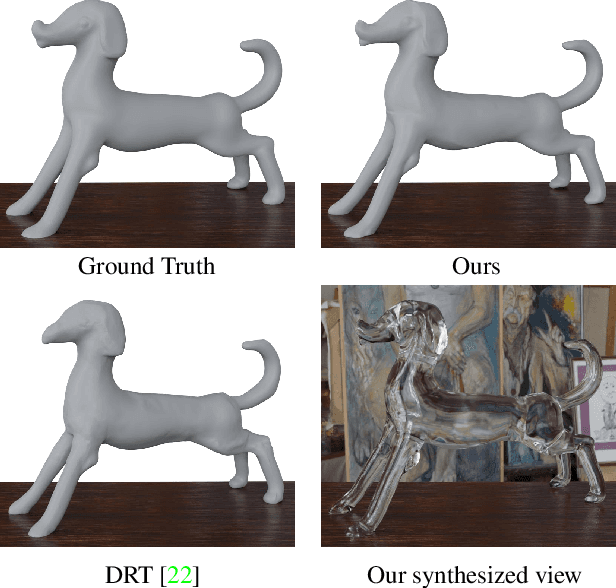
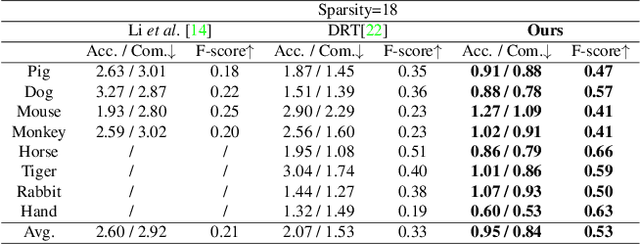

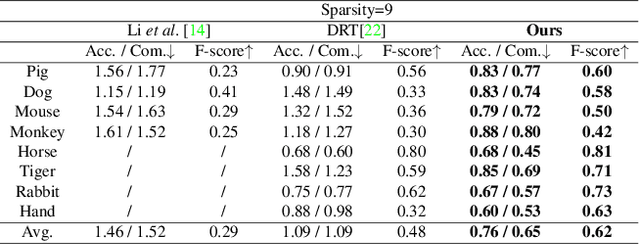
Abstract:We present a novel method, called NeTO, for capturing 3D geometry of solid transparent objects from 2D images via volume rendering. Reconstructing transparent objects is a very challenging task, which is ill-suited for general-purpose reconstruction techniques due to the specular light transport phenomena. Although existing refraction-tracing based methods, designed specially for this task, achieve impressive results, they still suffer from unstable optimization and loss of fine details, since the explicit surface representation they adopted is difficult to be optimized, and the self-occlusion problem is ignored for refraction-tracing. In this paper, we propose to leverage implicit Signed Distance Function (SDF) as surface representation, and optimize the SDF field via volume rendering with a self-occlusion aware refractive ray tracing. The implicit representation enables our method to be capable of reconstructing high-quality reconstruction even with a limited set of images, and the self-occlusion aware strategy makes it possible for our method to accurately reconstruct the self-occluded regions. Experiments show that our method achieves faithful reconstruction results and outperforms prior works by a large margin. Visit our project page at \url{https://www.xxlong.site/NeTO/}
NeuralRoom: Geometry-Constrained Neural Implicit Surfaces for Indoor Scene Reconstruction
Oct 13, 2022
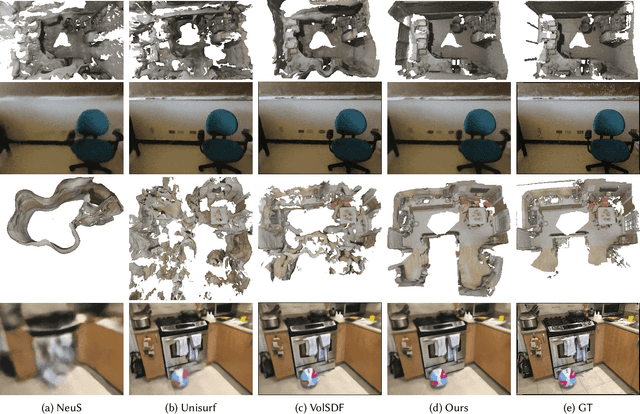
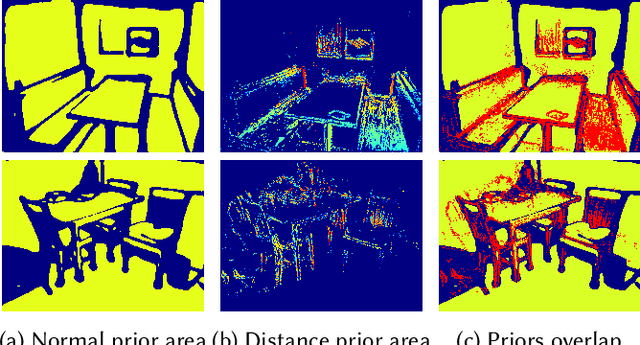
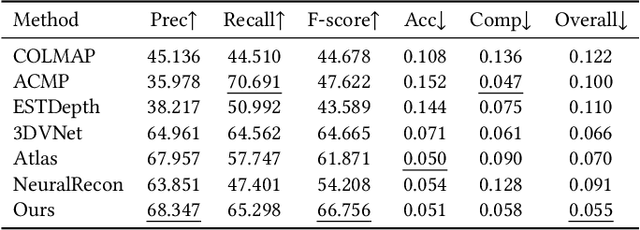
Abstract:We present a novel neural surface reconstruction method called NeuralRoom for reconstructing room-sized indoor scenes directly from a set of 2D images. Recently, implicit neural representations have become a promising way to reconstruct surfaces from multiview images due to their high-quality results and simplicity. However, implicit neural representations usually cannot reconstruct indoor scenes well because they suffer severe shape-radiance ambiguity. We assume that the indoor scene consists of texture-rich and flat texture-less regions. In texture-rich regions, the multiview stereo can obtain accurate results. In the flat area, normal estimation networks usually obtain a good normal estimation. Based on the above observations, we reduce the possible spatial variation range of implicit neural surfaces by reliable geometric priors to alleviate shape-radiance ambiguity. Specifically, we use multiview stereo results to limit the NeuralRoom optimization space and then use reliable geometric priors to guide NeuralRoom training. Then the NeuralRoom would produce a neural scene representation that can render an image consistent with the input training images. In addition, we propose a smoothing method called perturbation-residual restrictions to improve the accuracy and completeness of the flat region, which assumes that the sampling points in a local surface should have the same normal and similar distance to the observation center. Experiments on the ScanNet dataset show that our method can reconstruct the texture-less area of indoor scenes while maintaining the accuracy of detail. We also apply NeuralRoom to more advanced multiview reconstruction algorithms and significantly improve their reconstruction quality.
Video Shadow Detection via Spatio-Temporal Interpolation Consistency Training
Jun 17, 2022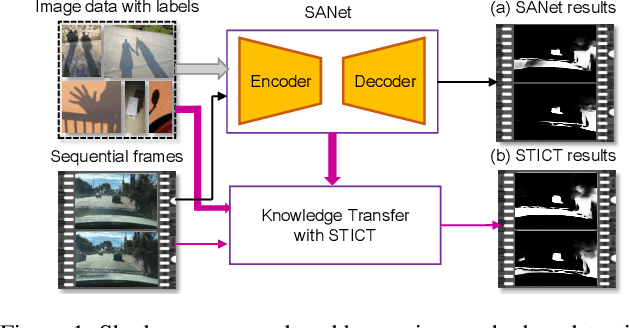

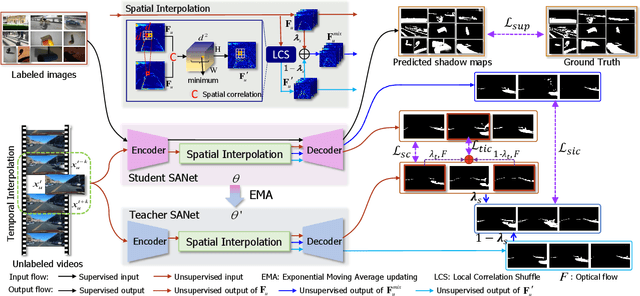
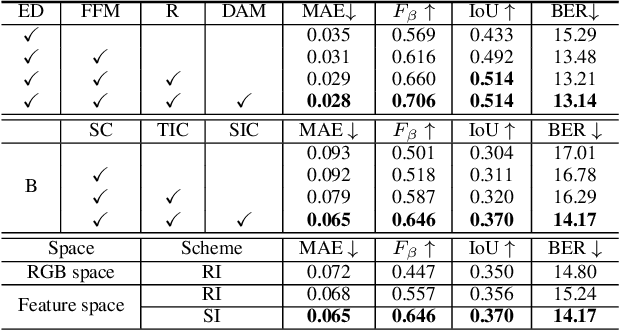
Abstract:It is challenging to annotate large-scale datasets for supervised video shadow detection methods. Using a model trained on labeled images to the video frames directly may lead to high generalization error and temporal inconsistent results. In this paper, we address these challenges by proposing a Spatio-Temporal Interpolation Consistency Training (STICT) framework to rationally feed the unlabeled video frames together with the labeled images into an image shadow detection network training. Specifically, we propose the Spatial and Temporal ICT, in which we define two new interpolation schemes, \textit{i.e.}, the spatial interpolation and the temporal interpolation. We then derive the spatial and temporal interpolation consistency constraints accordingly for enhancing generalization in the pixel-wise classification task and for encouraging temporal consistent predictions, respectively. In addition, we design a Scale-Aware Network for multi-scale shadow knowledge learning in images, and propose a scale-consistency constraint to minimize the discrepancy among the predictions at different scales. Our proposed approach is extensively validated on the ViSha dataset and a self-annotated dataset. Experimental results show that, even without video labels, our approach is better than most state of the art supervised, semi-supervised or unsupervised image/video shadow detection methods and other methods in related tasks. Code and dataset are available at \url{https://github.com/yihong-97/STICT}.
DGECN: A Depth-Guided Edge Convolutional Network for End-to-End 6D Pose Estimation
Apr 21, 2022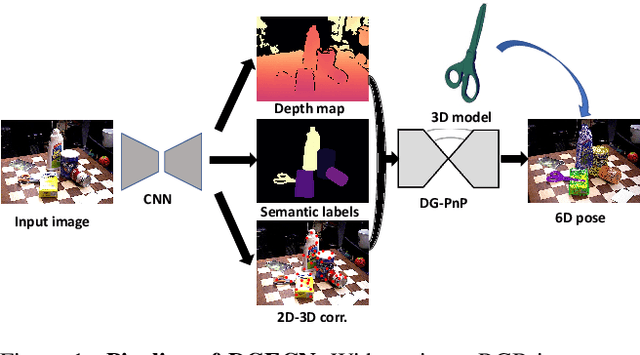
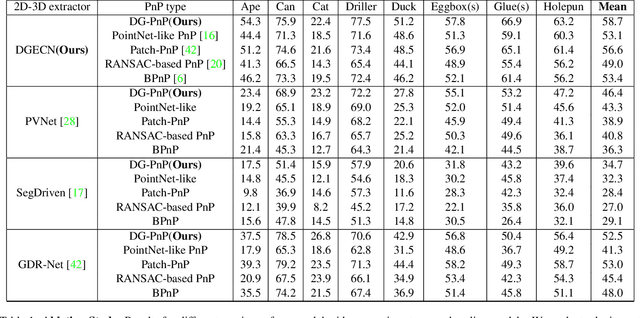


Abstract:Monocular 6D pose estimation is a fundamental task in computer vision. Existing works often adopt a two-stage pipeline by establishing correspondences and utilizing a RANSAC algorithm to calculate 6 degrees-of-freedom (6DoF) pose. Recent works try to integrate differentiable RANSAC algorithms to achieve an end-to-end 6D pose estimation. However, most of them hardly consider the geometric features in 3D space, and ignore the topology cues when performing differentiable RANSAC algorithms. To this end, we proposed a Depth-Guided Edge Convolutional Network (DGECN) for 6D pose estimation task. We have made efforts from the following three aspects: 1) We take advantages ofestimated depth information to guide both the correspondences-extraction process and the cascaded differentiable RANSAC algorithm with geometric information. 2)We leverage the uncertainty ofthe estimated depth map to improve accuracy and robustness ofthe output 6D pose. 3) We propose a differentiable Perspective-n-Point(PnP) algorithm via edge convolution to explore the topology relations between 2D-3D correspondences. Experiments demonstrate that our proposed network outperforms current works on both effectiveness and efficiency.
Luminance Attentive Networks for HDR Image and Panorama Reconstruction
Sep 14, 2021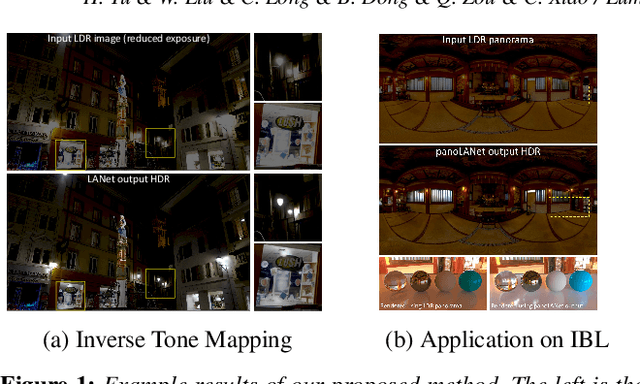
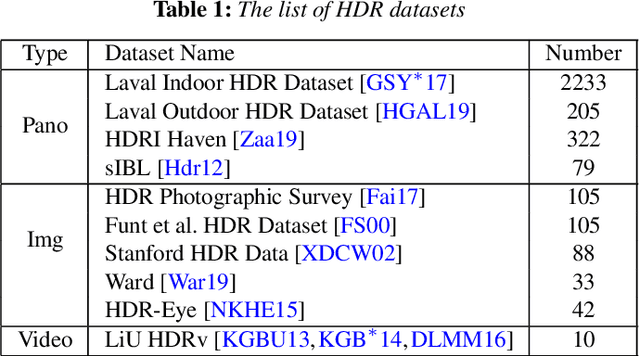
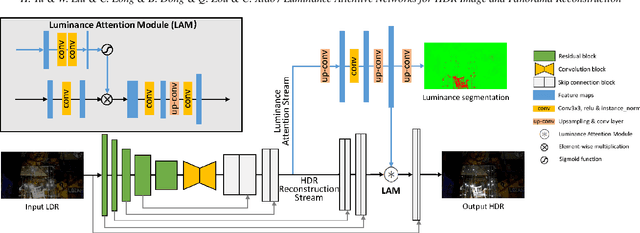
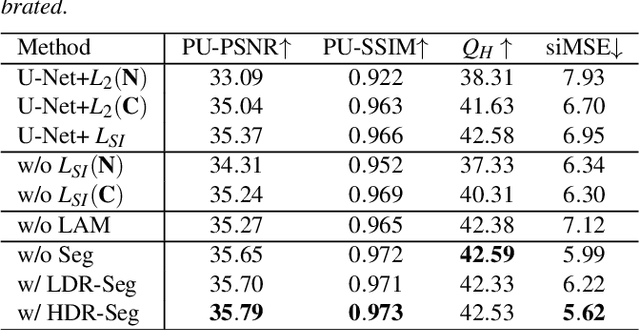
Abstract:It is very challenging to reconstruct a high dynamic range (HDR) from a low dynamic range (LDR) image as an ill-posed problem. This paper proposes a luminance attentive network named LANet for HDR reconstruction from a single LDR image. Our method is based on two fundamental observations: (1) HDR images stored in relative luminance are scale-invariant, which means the HDR images will hold the same information when multiplied by any positive real number. Based on this observation, we propose a novel normalization method called " HDR calibration " for HDR images stored in relative luminance, calibrating HDR images into a similar luminance scale according to the LDR images. (2) The main difference between HDR images and LDR images is in under-/over-exposed areas, especially those highlighted. Following this observation, we propose a luminance attention module with a two-stream structure for LANet to pay more attention to the under-/over-exposed areas. In addition, we propose an extended network called panoLANet for HDR panorama reconstruction from an LDR panorama and build a dualnet structure for panoLANet to solve the distortion problem caused by the equirectangular panorama. Extensive experiments show that our proposed approach LANet can reconstruct visually convincing HDR images and demonstrate its superiority over state-of-the-art approaches in terms of all metrics in inverse tone mapping. The image-based lighting application with our proposed panoLANet also demonstrates that our method can simulate natural scene lighting using only LDR panorama. Our source code is available at https://github.com/LWT3437/LANet.
 Add to Chrome
Add to Chrome Add to Firefox
Add to Firefox Add to Edge
Add to Edge